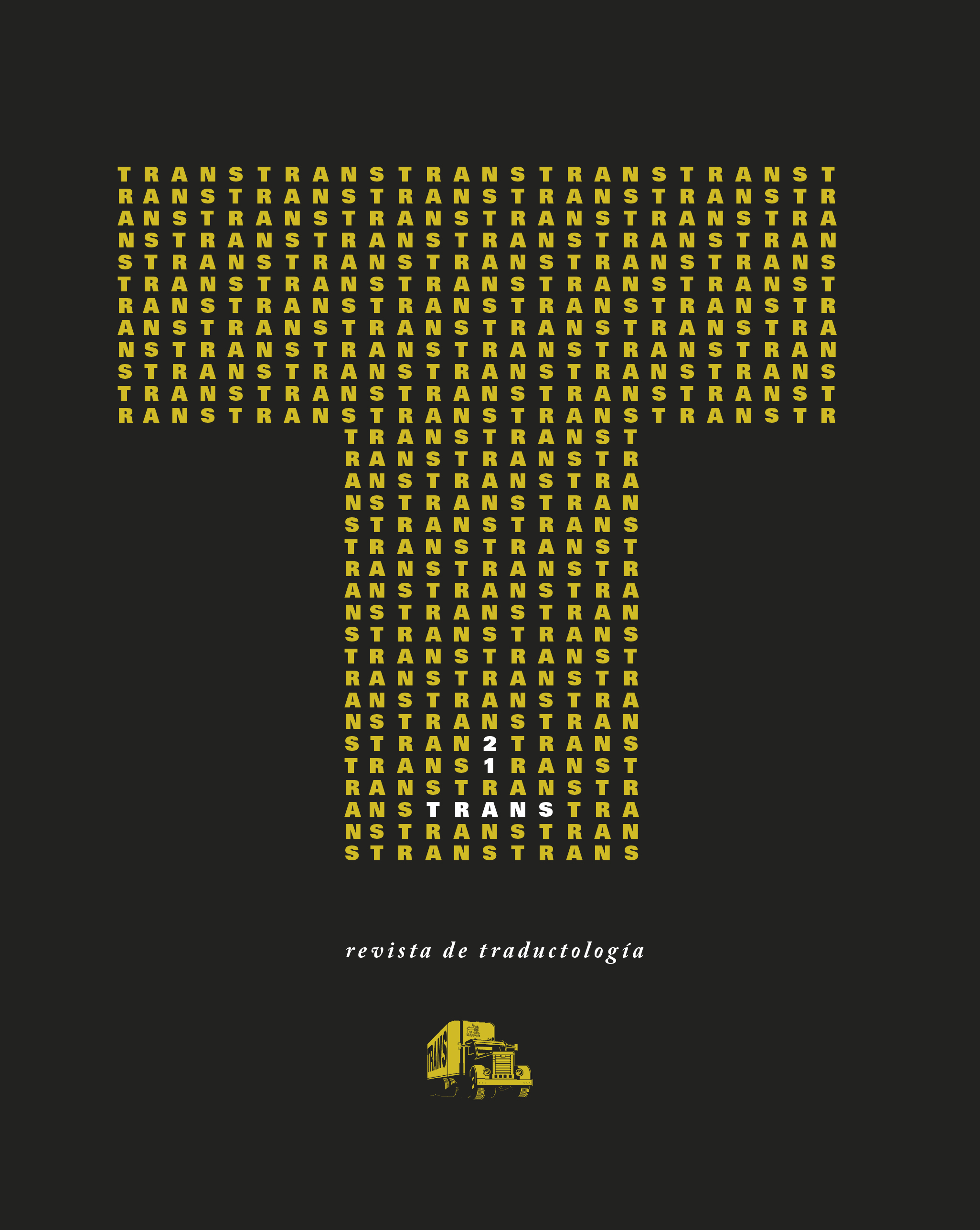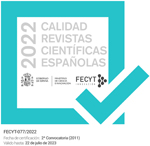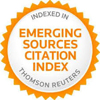Quixobytes: Specular Reflections of the Quixotic Myth in Electronic Leisure
DOI:
https://doi.org/10.24310/TRANS.2017.v0i21.3632Keywords:
Quixote, Presence, Video games, Remediation, Application.Abstract
Since its publication in 1605, Don Quijote has increasingly become part of a collective global culture, being translated and adapted into numerous languages and societies. The most recent step in this quixotic tradition has come in the shape of videogames that allegedly find their inspiration in the
Cervantean classic. These new remediations provide an insight into the multiple refractions of the hypotext, sometimes hidden among the crossover of narratives or reduced to the use of the character’s name. Whether close or far from the seminal text, these new adaptations prove that the quixotic myth is still a strong presence in our globalized culture.
Downloads
Metrics
Publication Facts
Reviewer profiles N/A
Author statements
Indexed in
-
—
- Academic society
- N/A
- Publisher
- Universidad de Málaga
References
Austen, Jane y Seth Grahame-Smith (2009): Pride and Prejudice and Zombies, Nueva York: Quirk Books.
Avalle-Arce, Juan B. (1989): «Quijotes y quijotismos del inglés», Ojáncano, 2, 58-66.
Borham-Puyal, Miriam (2015a): «Learning with Don Quixote for Children: the Presence of the Knight in Interactive Classrooms», Caracteres. Estudios culturales y críticos en la esfera digital, 4/1, 105-127.
Borham-Puyal, Miriam (2015b): Quijotes con enaguas. Encrucijada de géneros en el siglo xviii británico, Valencia: JPM Ediciones.
Borham-Puyal, Miriam (2016): «For the Amusement of His Merry Little Subjects: How British Children Met Don Quixote in the Long Eighteenth Century», Anales Cervantinos, XLVII, 179-204.
Bourriaud, Nicolas (2005): Postproduction. Culture as screenplay: How art reprograms the world. Nueva York: Lukas & Sterling.
Canavaggio, Jean (2005): Don Quichotte, du livre au mythe: quatre siècles d’errance, París: Fayard, D.L.
CVG (1985): «The Don to the Rescue Computer and
Videogames», cvg, 39, 39.
Fernández Porta, Eloy (2008): Homo Sampler. Tiempo y consumo en la Era Afterpop, Barcelona: Anagrama.
Ferré, Juan Francisco (2007): «La literatura del post. Instrucciones para leer narrativa española de última generación», en J. Ortega y J. F. Ferré (eds.), Mutantes. Narrativa española de última generación,
Córdoba: Berenice, 7-21.
Gutiérrez Párraga, María Teresa (2006): La significación del juego en el Arte Moderno y sus implicaciones en la educación artística, Madrid: UCM [tesis no publicada].
Iffland, James (1987): «On the Social Destiny of ‘Don Quixote’: Literature and Ideological Interpellation: Part I», The Journal of the Midwest Modern Language Association, 20/1, 17-36.
Maeso, Gustavo (2015): «Los Delirios de Von Sottendorff, de Bilbao a la galaxia Nintendo», El Mundo, 12 de diciembre, <http://www.elmundo.es/tecnologia/2015/12/12/566b19c> [consulta:
-III-2017].
Martín García, Jorge (2015): «Luchar con odres: reescritura
cervantina y subversión en el videojuego Don Quijote (1987)», Caracteres. Estudios culturales y críticos de la esfera digital, 4/1, 83-104.
Maruo, Kosuke, et al. (2009) [2016]. Don Quijote de la Mancha: el manga, trad. Marta Estefanía Gallego Urbiola, Madrid: La Otra H.
Mora, Vicente Luis (2014): «Acercamiento al problema terminológico de la narratividad transmedia», Caracteres. Estudios culturales y críticos de la esfera digital, 3/1, 11-41.
Pardo, P. J. (2011): «Cine, literatura y mito: Don Quijote en el cine, más allá de la adaptación», arbor Ciencia, Pensamiento y Cultura, 187/748, 237-246.
Riera Muñoz, Pau Damià (2013): «Narrativa, música y transmedia en Nier: hacia una nueva obra de arte total», Caracteres. Estudios culturales y críticos de la esfera digital, 2/1, 169-186.
Sbert, Mateu, et al. (2014): «A game to relive Don Quixote’s adventures», I Congreso de la Sociedad Española para las Ciencias del Videojuego, <http://gaia.fdi.ucm.es/sites/cosecivi14/es/papers/16.pdf> [consulta: 1-III-2017].
Universitat de Girona (2012): «El GILab desenvoluparà un nou videojoc educatiu basat en la història d’El Quixot», Universitat
de Girona – Archivo de Noticias, <http://www.udg.edu/Not%C3%ADciesiagenda/Reculldenot%C3%ADcies/tabid/2575/p/28491/ language/es-ES/Default.aspx> [consulta: 1-III-
.
Watt, Ian (1996): Myths of Modern Individualism, Cambridge: Cambridge University Press.
Downloads
Published
How to Cite
Issue
Section
License
All contents published in TRANS. Revista de Traductología are protected under the Creative Commons Attribution-NonCommercial-ShareAlike 4.0 International (CC BY-NC-SA 4.0) license. All about this license is available in the following link: <http://creativecommons.org/licenses/by-nc-sa/4.0>
Users can copy, use, redistribute, share and exhibit publicly as long as:
- The original source and authorship of the material are cited (Journal, Publisher and URL of the work).
- It is not used for comercial purposes.
- The existence of the license and its especifications are mentioned.
- ShareAlike — If you remix, transform, or build upon the material, you must distribute your contributions under the same license as the original.
There are two sets of authors’ rights: moral and property rights. Moral rights are perpetual prerogatives, unrenounceable, not-transferable, unalienable, imprescriptible and inembargable. According to authors’ rights legislation, TRANS. Revista de Traductología recognizes and respects authors moral rights, as well as the ownership of property rights, which will be transferred to University of Malaga in open access.
The property rights are referred to the benefits that are gained by the use or the dissemination of works. TRANS. Revista de Traductología is published in an open access form and it is exclusively licenced by any means for doing or authorising distribution, dissemination, reproduction, , adaptation, translation or arrangement of works.
Authors are responsable for obtaining the necessary permission to use copyrighted images.













21.png)
